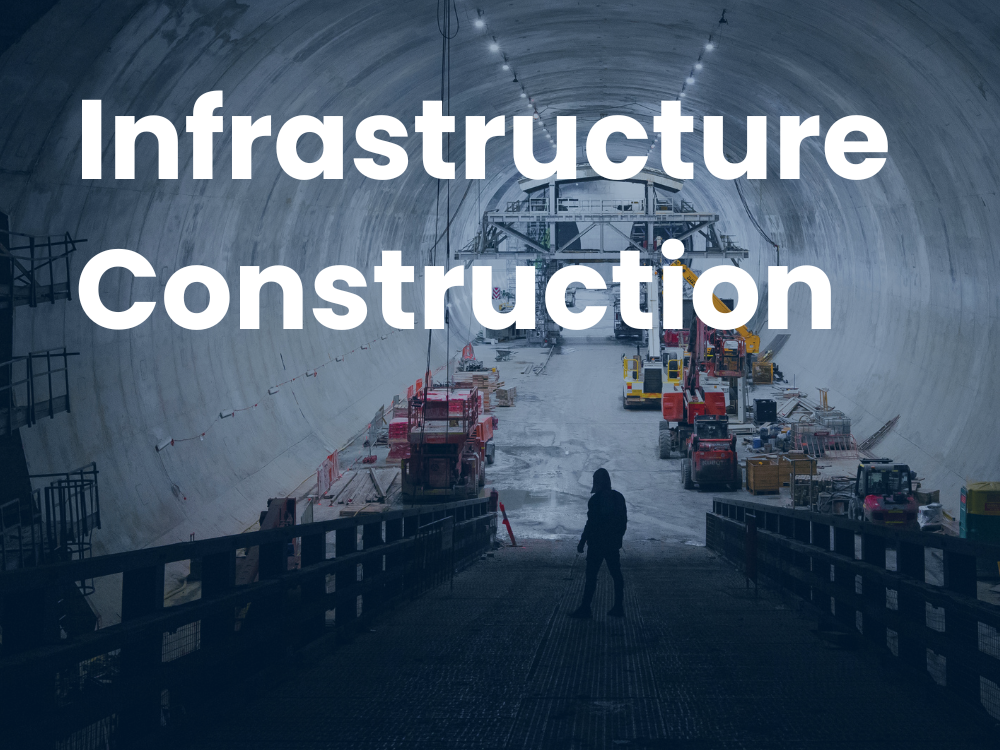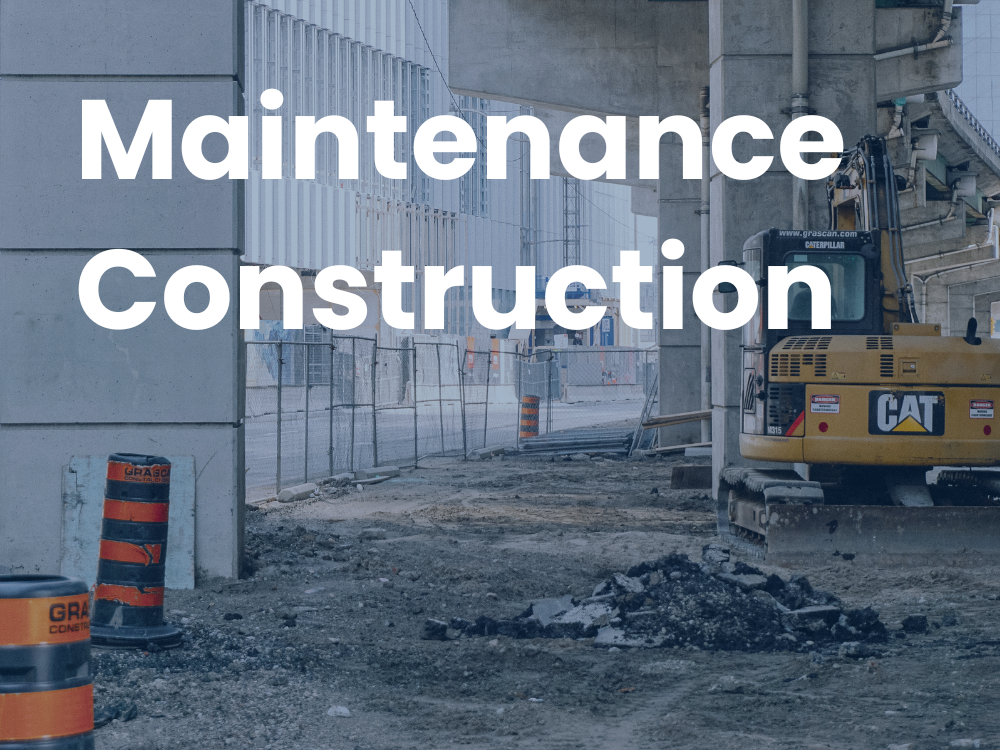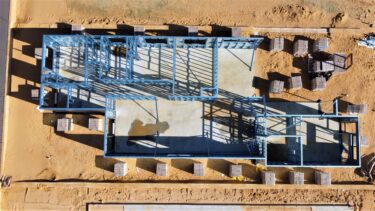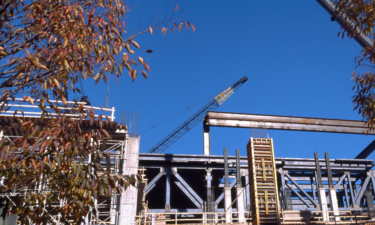Construction Industry in Australia: Insights and Analysis
Access the latest Australian insights on building construction and infrastructure/mining.

Act on opportunities with independent, economics-driven insight.





Oxford Economics Australia on the Construction Industry
Get the latest insights, straight to your inbox.
Building Construction
The downturn for total building is expected to continue in FY2024, with activity sliding 9% to $121.4 billion (constant FY2022 prices). Little change from this level is expected for FY2025. The uplift in build costs and a large backlog of work that is proving difficult to draw down have amplified the demand drag of higher borrowing costs. Delays and builder administrations have further suppressed home buyer confidence.
Solid growth is forecast to return from FY2026, with total building expanding to $130.4 billion (+9%). Easing interest rates from late 2024, robust population growth, and rising pressure on various asset classes fuel a sustained upturn in the back half of the decade.
Access our latest Residential Construction Insights here:

Post
Australian near-term building outlook remains challenging
Negative momentum for total building in FY2023 (-8%) is expected to continue in FY2024, with activity sliding a further 11% to $108.4 billion (constant FY2021 prices). The uplift in build costs and a large backlog of work that is proving difficult to draw down are amplifying the demand drag of higher borrowing costs. Delays and builder administrations are further supressing home buyer confidence.
Find Out More
Service
Australian Building Masterplan
Market leading insights into the building and non-residential construction industry in Australia.
Find Out MoreInfrastructure Construction
Government-funded infrastructure projects are propelling engineering construction activity, with a substantial 18.8% increase in publicly funded transportation construction work, reaching a record $30.1 billion in the twelve months to June 2023. Forecasts predict a peak of $34.8 billion in government-funded transportation work by FY25. Concerns arise about the feasibility of the announced pipeline due to industry capacity constraints and rising input costs, with an upcoming independent review expected to align with these concerns, potentially prompting a government downgrade of their pipeline.
Persistent labor shortages in the construction sector are evident in a 3.8% increase in the wage price index for construction workers in FY23, the highest since FY12. Despite expectations that increased migration might alleviate some shortages, labor capacity is anticipated to remain constrained, leading to higher wage growth. In the June 2023 quarter, the value of work done surged to $30.0 billion, a 17.7% increase from the same quarter in 2022. Commencements rose by 2.6% year-on-year to $23.8 billion, and the value of work yet to be done increased by 19.6% year-on-year, reaching $100.6 billion at the end of June, equivalent to approximately 11 months of work at current activity rates.
Access our latest Insights on Infrastructure Construction in Australia here:
Maintenance Construction
The Australian maintenance sector has benefited from federal funding, particularly through the expansion and extension of the Local Roads and Community Infrastructure (LRCI) Program to $3.25 billion. In FY22, road maintenance activity increased significantly, driven by rehabilitation work in NSW, particularly on highway and arterial roads. Flooding damage in Southeast Queensland also led to elevated public maintenance expenditure. Major public housing maintenance programs have supported activity and are expected to continue into FY23. The mining sector’s outlook is generally positive, with a recent surge in commodity prices supporting short-term maintenance activity. However, the long-term outlook for coal mining has been downgraded to meet net-zero 2050 goals, while maintenance of alternative energy sources like hydrogen is expected to increase, particularly in the 2030s.
Risks to these forecasts include prolonged supply chain disruptions, capacity constraints, and the ongoing conflict between Russia and Ukraine. China’s structural challenges and attempts to transition to a consumption-led growth model pose potential headwinds for Australian mining investment and maintenance activity. The shift toward a net-zero economy is expected to lead to a decline in coal and a boom in hydrogen and other renewable sources, presenting uncertainties and risks to forecasts depending on legislative changes and technological developments. The total maintenance expenditure, estimated at $53.7 billion in FY22, is forecasted to average $54.5 billion over the five years to FY27, driven by growth in the industrial super sector, road maintenance, and building maintenance, while utility maintenance is expected to be more muted due to the transition toward renewable energy.
Access our latest insights on Australia’s Maintenance sector below:
Mining in Australia
Exploration in the Australian mining sector reflects a divergent trend, with gold exploration witnessing a substantial 22.5% decline in FY23, while iron ore exploration remains relatively stable due to higher prices. The total exploration expenditure contracted by 6.8% to $4.2 billion in FY23, primarily driven by downturns in gold and oil and gas exploration. Gold exploration, though the largest segment, is forecasted to further ease in FY24, averaging $949 million annually over the next five years. Conversely, oil and gas exploration is poised for robust growth, with an expected 102.4% surge in FY24 and continued expansion (33.8%) in FY25, positioning oil as the predominant component of mining exploration.
In mining investment, a rebound from the post-2013 decline has been marked by growth in coal and metal ore investments, leading to a 13.4% increase in total mining investment to $43.9 billion in FY22. The current forecast indicates a 2.5% rise in total investment in FY23, with an estimated 4.1% increase in Plant, Machinery, and Equipment investment. This outlook, stronger than initially anticipated, is influenced by factors such as higher oil prices and major projects. However, challenges persist, including political pressures against new coal and gas mines, potential suspension of major projects, and increasing hurdles in accessing financing for new mines. The next phase of mining investment, though not as substantial as the previous boom, is expected to be sustained by spending on sustaining capital and a long-term need for capital replacement projects.
Access our latest insights to support mining investment decision-making:
Roads Construction
In the June 2023 quarter, Australian roads construction activity surged by 18.2% year-on-year, reaching $7.2 billion, driven by increased publicly funded (20.4% y/y) and privately funded (13.6% y/y) projects. The Independent Strategic Review of the Infrastructure Investment Program identified 52 projects valued at $17.1 billion that won’t receive funding, offset by $6.8 billion for cost overruns. While these withheld projects are not heavily factored into forecasts, and new funding is considered, the overall outlook remains stable. Revisions from the Australian Bureau of Statistics, adjustments for delays, and cost overruns on mega-projects due to labor shortages and material price increases have been integrated into the medium-term outlook.
Globally, risks include ongoing monetary tightening, China’s economic slowdown, and uncertainties related to the Russia-Ukraine conflict. The potential escalation of the conflict poses a risk to the global oil supply and energy prices. China’s structural challenges may impact global supply chains, contributing to input cost inflation. The Russian-Ukraine war’s unclear outcome introduces risks, particularly disruptions to the global energy supply. Domestically, government financing is pivotal for the transportation infrastructure boom, and the simultaneous surge in transportation and mining projects poses a risk of resource competition, potentially leading to increased cost escalation.
Access our latest insights to support roads construction decision-making:

Nicholas Fearnley
Head of Global Construction Forecasting
+61 2 8458 4262

Nicholas Fearnley
Head of Global Construction Forecasting
Sydney, Australia
Dr Nicholas Fearnley is the Head of Global Construction Forecasting, based in Sydney. Nicholas oversees the teams that produce the various construction, mining, and maintenance studies. He works over the full construction spectrum, and regularly presents and provides commentary for both the construction and mining industries.
Nicholas joined Oxford Economics in 2019 after working at Macromontor, where he was responsible for producing regular Australian building construction forecast reports, and bespoke cost escalation and material demand forecasts.
Prior to joining Macromonitor, Nicholas completed a PhD at the University of Sydney with a thesis titled: “A Critical and Quantitative Analysis of the Relationship between Informal Institutions and Economic Development.” He was awarded the Walter Noel Gillies Prize for best PhD thesis in Economics, and his thesis was accepted without edits.
Nicholas has undergraduate degrees in both Accounting and Applied Finance from Macquarie University, and a first class honours degree in Accounting from the University of Sydney with a thesis titled: “Culture and the Measurement Decision Offered by Investment Property”.

Maree Kilroy
Senior Economist, Construction & Property Forecasting, Oxford Economics
+61 (0) 2 8458 4283

Maree Kilroy
Senior Economist, Construction & Property Forecasting, Oxford Economics
Sydney, Australia
Maree is a senior economist in the property and building forecasting team at Oxford Economics Australia, analysing demographic trends, housing markets and policy shifts. Having worked in industry economics for 10 years, Maree’s primary responsibility is residential property forecasts which are distributed through our subscription products, most notably the recently released ResRadar.

Timothy Hibbert
Head of Building & Property Forecasting, OE Australia
+61 (0) 2 8458 4270

Timothy Hibbert
Head of Building & Property Forecasting, OE Australia
Sydney, Australia
Timothy Hibbert leads the property, building, and demographic forecasting at BIS Oxford Economics. He has over 15 years of experience as an industry economist, working across government, consultancy, and subscription services.
